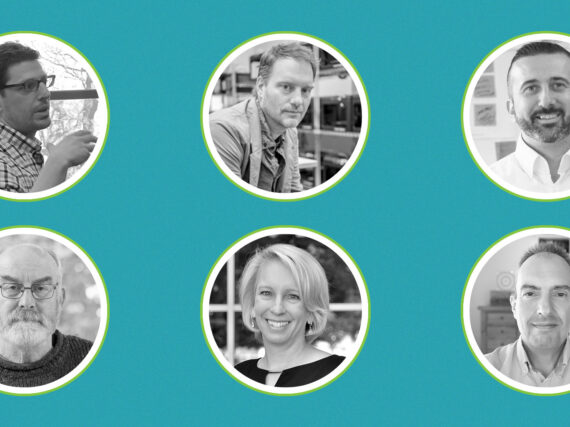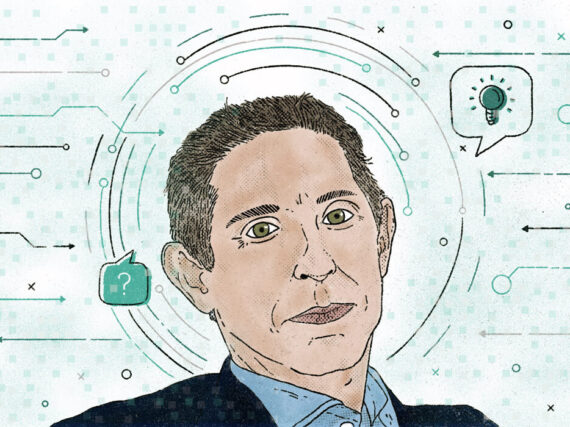When speaking with state and local agencies, reactions to the idea of remote collaboration can range from tepid to active distrust. “The best kind of management is in-person, where issues can be addressed immediately,” is one such sentiment we’ve heard.
For government agencies, loss of control and accountability is a serious concern. However, whenever we convince clients to use our remote team instead of hiring onsite contractors, the experience is a positive one.
In fact, remote teams can provide an even higher level of transparency and accountability than you might get from onsite teams. We’d like to share how we break down barriers of distance and location to deliver a great experience for our clients.
How, not where
At GovWebworks, we consider the fact that many of our clients assume we’re based in Portland, Oregon, rather than Portland, Maine, a good thing. While Maine is home, we’ve made a point of de-prioritizing where we are based in favor of how we work.
The keys we’ve found to forming strong remote relationships are rooted in three main factors:
- Agile project management – for consistent check-ins and visible incremental progress
- Online collaboration tools – for reliable communication
- Appropriate onsite visits with the client – to form bonds in person
1. Agile project management
The agile Scrum framework naturally lends itself to remote collaboration. This is because it addresses progress in small increments called user stories. These are assigned, completed, and reviewed by the entire team. The process ensures that the onsite team (you, the client) is constantly aware of what the remote team (we, the contractor) is doing.
Agile sprints, which are typically two weeks long, follow a formalized and predictable pattern of activities that lead the team from planning, to doing, to reviewing. The standard sequence of meetings encourages collaboration and discussion. Consistent progress updates help clients feel part of the process throughout the project.
Sprint meetings include the following:
-
Planning
This meeting sets forth the goals and activities for the sprint. We encourage the client to define the “conditions of satisfaction” to reflect the goals of the client.
-
Standup
Standups typically occur daily to check on progress. Each member of the team reports on what they did the previous day, what they plan to do today, and any possible impediments to progress.
-
Review
At the end of the sprint to review completed tasks and confirm that “conditions of satisfaction” have been met.
-
Grooming
To end one sprint and prepare for the next, this meeting serves to close, refine, and estimate user stories for the next leg of the project.
-
Retrospective
At the end of a sprint, the team looks “What went well?” and “What could have gone better?” so as to make the appropriate adjustments for the next sprint.
The value for remote collaboration is in the reliable and consistent nature of checkins and reviews. The client is never left wondering what the contractor is working on, or waiting a long period of time to see results. This leads to trust for the client, and accountability for the contractor.
For more details on this topic, see our post on “How to Get the Most Out of Scrum Meetings.”
2. Online collaboration tools
The success of any Agile remote collaboration process depends on certain online tools. They are the secret to fluid team communication, no matter where team members are located. For instance, we use Slack for coordinating with coworkers a few feet away, as much as we do with clients across the planet.
The following tools are the ones our clients respond to and appreciate the most:
-
Jira
A project management application from Atlassian, Jira manages all tasks, issues, and bugs for a project. The burndown chart provides the at-a-glance status, which helps to spot and correct roadblocks or issues. Since Jira is used primarily by our team, clients can choose their level of interest or engagement. They may log in to monitor tasks and the project as a whole, or wait until sprint meetings.
-
Slack
This cloud-based instant messaging and collaboration platform has transformed the way many teams communicate. Once an account is in place, teams can create channels for each project and invite the appropriate team members to join the channel. Similar to Facebook groups, you can see all discussions in your channels at all times without having to respond unless needed. Slack offers the ultimate transparency into the work on a project by providing one place for all documents, discussions, and video or audio conferencing. As well, a lot of humor, camaraderie, and any necessary venting takes place in Slack. This fosters an overall positive attitude on the team. See Time Doctor’s article, How to Use Slack and Be A Productivity Hero for Your Remote Team, for more about the benefits of Slack.
-
Go-to-Meeting
The remote contracting revolution began in the 2000s with the advent of web-hosted online meeting, sharing, and video conferencing software. All it takes is a web cam and monitor in a conference room, or Go-To-Meeting installed on a personal laptop with audio or web cam, or simply a phone.
-
Confluence
Depending on the needs of the project, we may use Confluence, a collaboration wiki from Atlassian (same as Jira), for sharing files such as design mock ups between remote and onsite teams. Also used as a repository for documents with revision management (similar to Google docs).
And then, of course, there’s always good ole email for communicating, and Google docs for document sharing. But we find that these are only needed as back up in most cases. Or if the client is unable to access the options above.
3. Appropriate onsite visits
Certainly a project can be accomplished with the above tools and processes alone. However, we believe time spent onsite with the client is where the magic happens. This need not be more than a few key visits to get acquainted and a form a bond. Typically this happens during discovery meetings, user studies (if applicable), and training workshops.
-
Kickoff and discovery
We like to kickoff most of our projects with a visit by our key team members. They attend discovery meetings with the onsite team(s) and gather information about the project. We also encourage social time over meals, or even an outing such as a hike or raft trip, to build team connections and engagement.
-
User studies
In the case of projects requiring usability studies, we may decide to have an onsite presence for meeting with user groups, face-to-face interviews or testing, and data analysis with the onsite team. However, it is also possible to do these tasks remotely with GoToMeeting, online or phone surveys, and usertesting.com.
-
Training
When it’s time to learn how use web admin tools and implement a new project, we find onsite training to be more effective. A project manager and possibly a developer conducts workshops onsite to assure the client can ask questions in person and get help with the necessary tools.
-
Onsite subcontractors
If requested by the client, we may provide an onsite subcontractor during a project. The subcontractor generally performs usability studies, specific information gathering, or assists with project management. In some cases, a live person at the office can more quickly surmount communication hurdles. Or demonstrate how to use collaboration tools.
Wrap up
We love the fact that these tools combined with the agile process make it easy to work with clients across the country (and around the world). Our clients become friends and coworkers as much as the people we see everyday. We also save clients time and money due to the efficiency and transparency of the process.
The best part about remote collaboration is that in-person meetings, especially, become much less of a chore. Team members from multiple locations can discuss and resolve a topic in few minutes on Slack or in a GoToMeeting standup. This saves the time and resources to schedule and attend a lengthy meeting.
In the end, such benefits can mean more, rather than less, control and accountability. And that alone can make it worthwhile for government agencies.
Learn more
- A Day in the Life of a Remote Contractor: Or, what I’m really doing to stay productive at the home office by Kevin Ferguson
- Remote Work: The 10 Biggest Misconceptions
- Contact us with any questions







